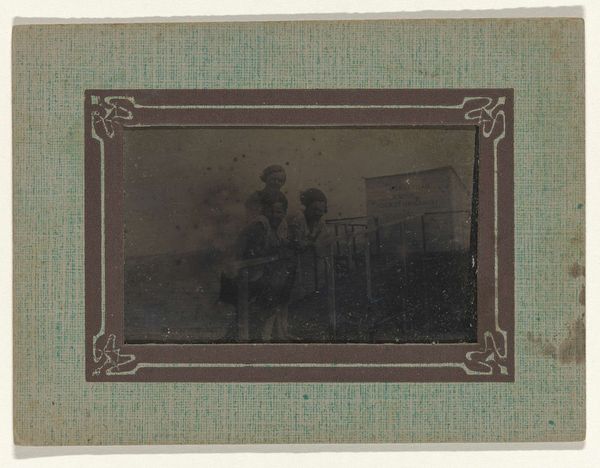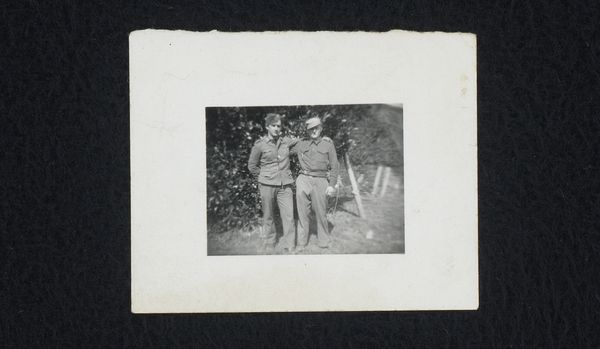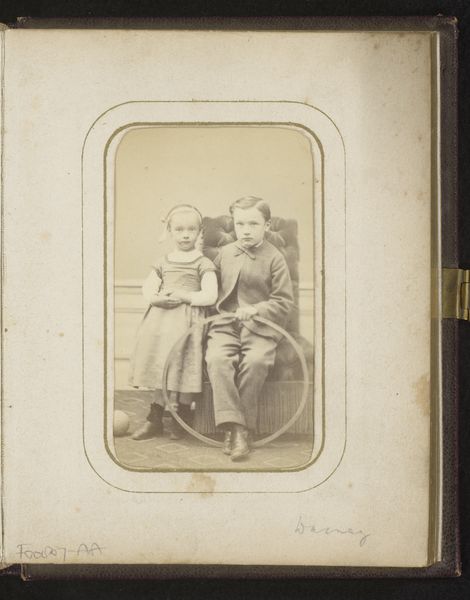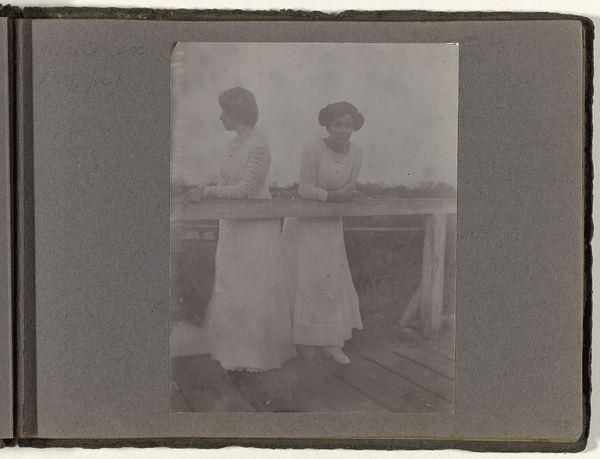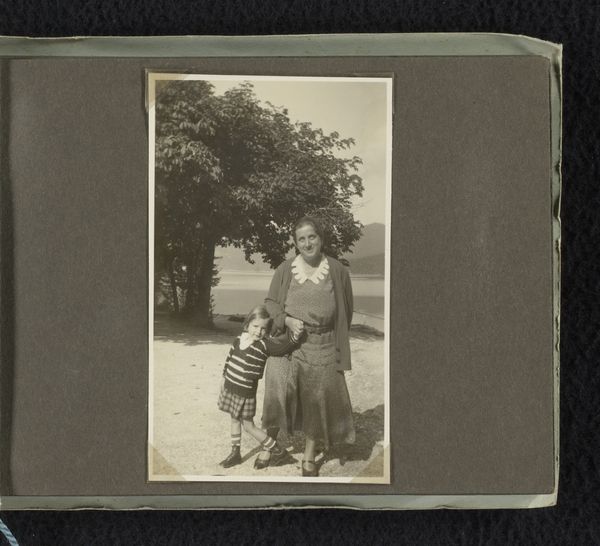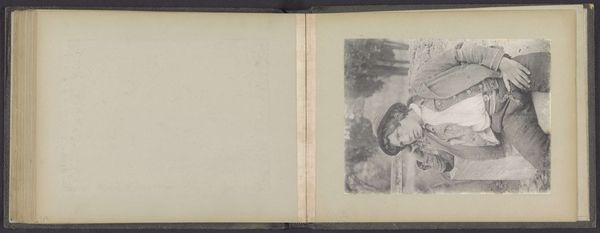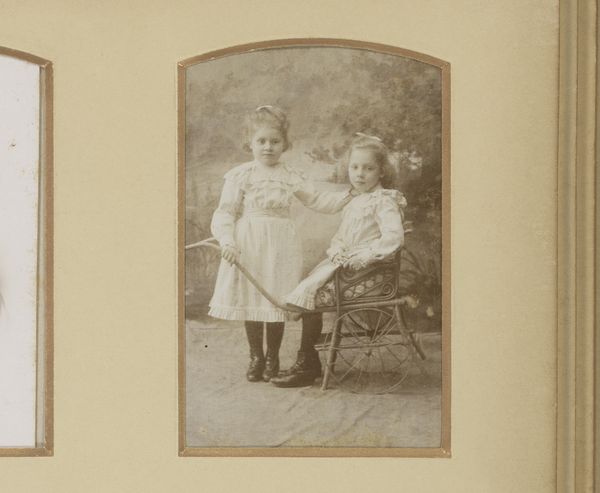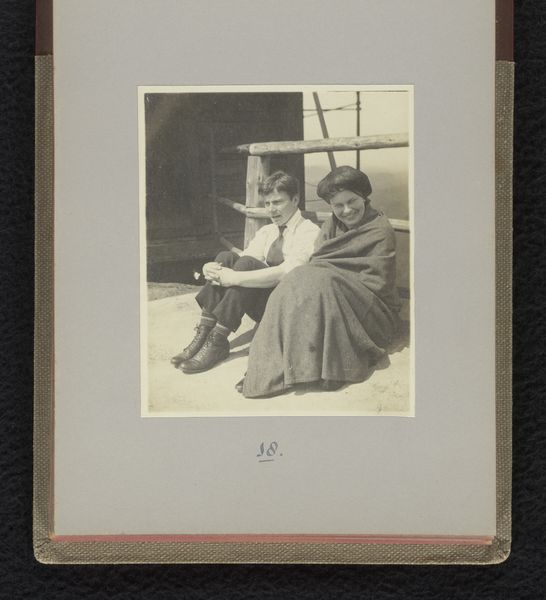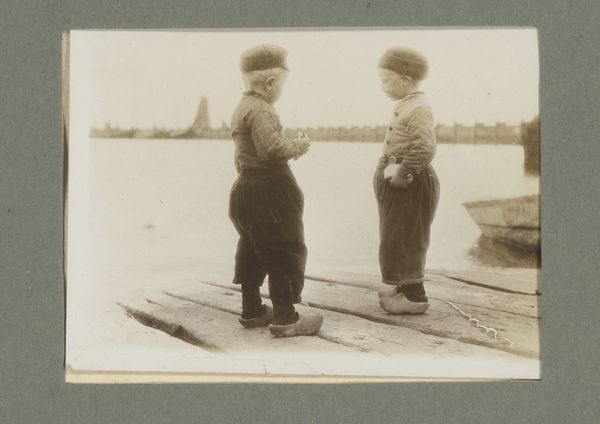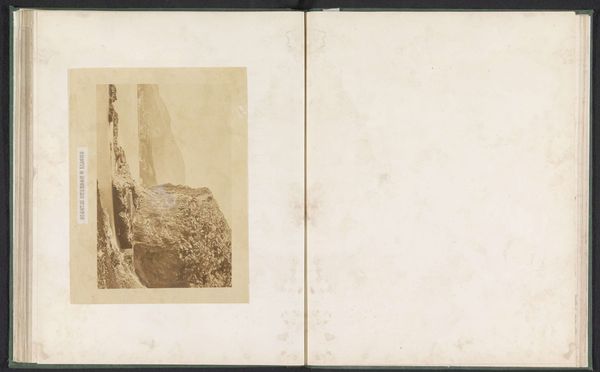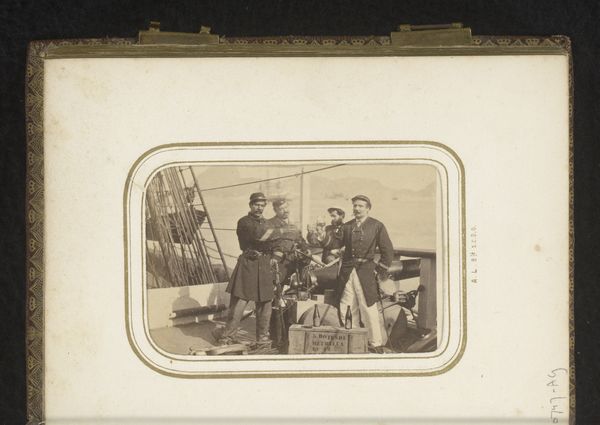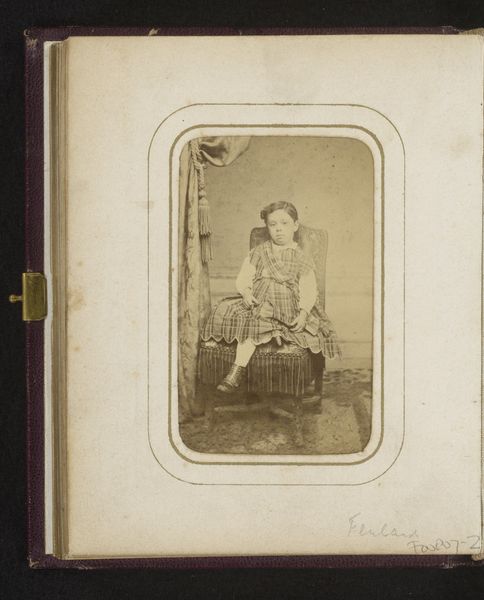
Portret van twee meisjes op het strand bij Valkeveen, mogelijk is een van de twee Koosje Ochse c. 1920 - 1925
0:00
0:00
photography, photomontage
#
portrait
#
still-life-photography
#
photography
#
photomontage
#
realism
Dimensions: height 59 mm, width 90 mm, height 95 mm, width 128 mm
Copyright: Rijks Museum: Open Domain
Curator: I find this rather faded photograph quite haunting, a stillness almost of another world. What’s your initial reaction? Editor: It's undeniably evocative. This is an anonymous piece, probably dating from around 1920-1925, and is titled "Portrait of two girls on the beach near Valkeveen, possibly one of them is Koosje Ochse." What I find striking is the construction of memory in relation to photographs as a cultural phenomenon. Curator: Precisely! It seems the anonymous photographer captured two children on the beach. The clothing looks typical for that time, doesn't it? But, it is the presumed innocence of the two girls contrasting with what could have been, during this volatile inter-war period that strikes me. I read a vulnerability into those seated figures that is unavoidable now, from our contemporary vantage point. Editor: And that vantage point is crucial. These images circulated through networks of family, perhaps of close friends, in the home—an intimate visual language from which an art tradition emerged in the early to mid-20th century. These modes of documentation were inherently linked to shifting perceptions of childhood within a domestic social sphere, in light of growing modern anxieties, don’t you agree? Curator: Absolutely. What emerges is an uneasy quietude. Are the girls really contemplative, or just instructed to look so by an adult off frame? The fact it might have even have been Koosje Ochse reminds us that the portrait exists on a much more granular personal, familial level of significance as well. The framing—and the materiality of an object aging–seems poignant when viewed in our current art-historical contexts. Editor: Indeed. The layers of frames, too, suggest the object status that was bestowed on this photograph, with each iteration further distancing the reality. Ultimately, I read it as both document and creation; one speaking to a singular relationship while simultaneously illustrating the shifting landscape of cultural representations in a nascent media environment. Curator: It seems that a picture is never *just* a picture, and I agree, the interplay of all of those historical, political, and social undercurrents elevate this little photograph to be much more significant artifact. Thank you. Editor: And thank you. These sorts of documents of historical trivia are incredibly interesting!
Comments
No comments
Be the first to comment and join the conversation on the ultimate creative platform.
